Close
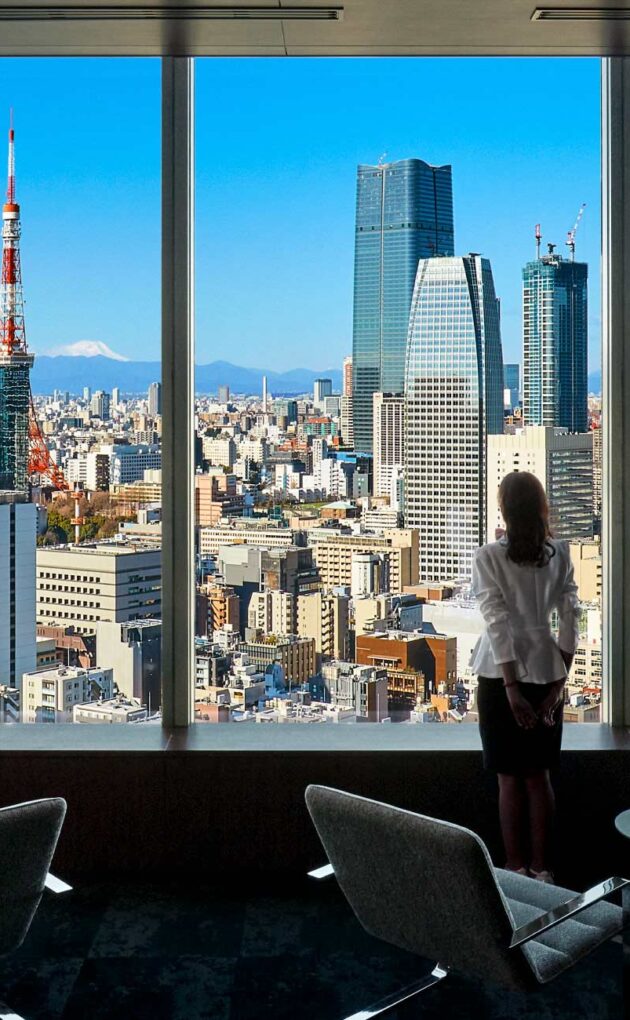

It was with some feeling of loss that everyone in Japan watched the Tsukiji Fish Market relocate to Toyosu in 2018. At the time, there was much made of this every day in the news media, making the move to Toyosu common knowledge across the nation. However, what most people do not realize is that while the market itself has left Tsukiji, the adjacent “outer market” remains virtually unchanged with rows of small shops that still endow the neighborhood with something of a Showa period atmosphere. As well as shops that sell fresh fish and meat, you can find all manner of cooking related items from dried fish to tableware ad kitchen knives. There are also plenty of places to eat including kaisendon (assorted seafood on rice) restaurants and soba restaurants as well as over 30 sushi restaurants. Is this heaven for fish? Well, it sure sends a lot of fish up there, that’s for sure! (Let’s just eat everything anyway!). The Tsukiji Outer Market is cheap, delicious and fun!
Index
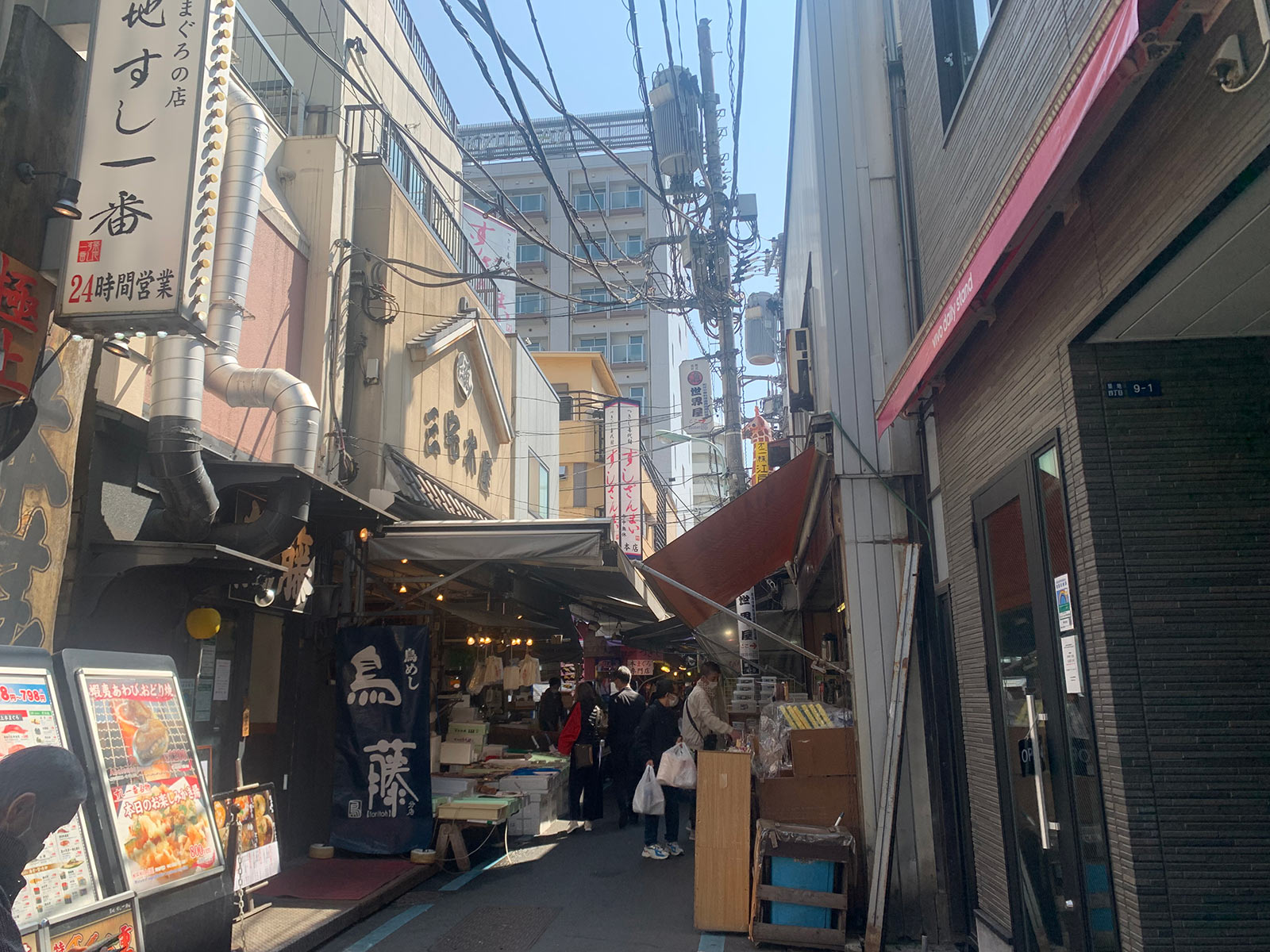
Tsukiji Market rose into prominence following World War II as the “kitchen of Tokyo” but, due to its aging infrastructure, relocated along with its renowned tuna auctions to Toyosu in the fall of 2018. Toyosu Market is essentially a facility for wholesalers and intermediate wholesalers where the general public cannot really shop. On the other hand, while the Tsukiji Outer Market is primarily intended to serve those operating restaurants out of shops directly managed by wholesalers (professionals, in other words), the general public is also welcome to shop here. The neighborhood, bounded by the streets of Shin-Ohashi-dori and Harumi-dori, is home to nearly 460 shops, some of which are located inside building but most of which are street level shops facing on to narrow roads or alleyways. Most specialize in certain ingredients or kitchen utensils, selling everything related to food.
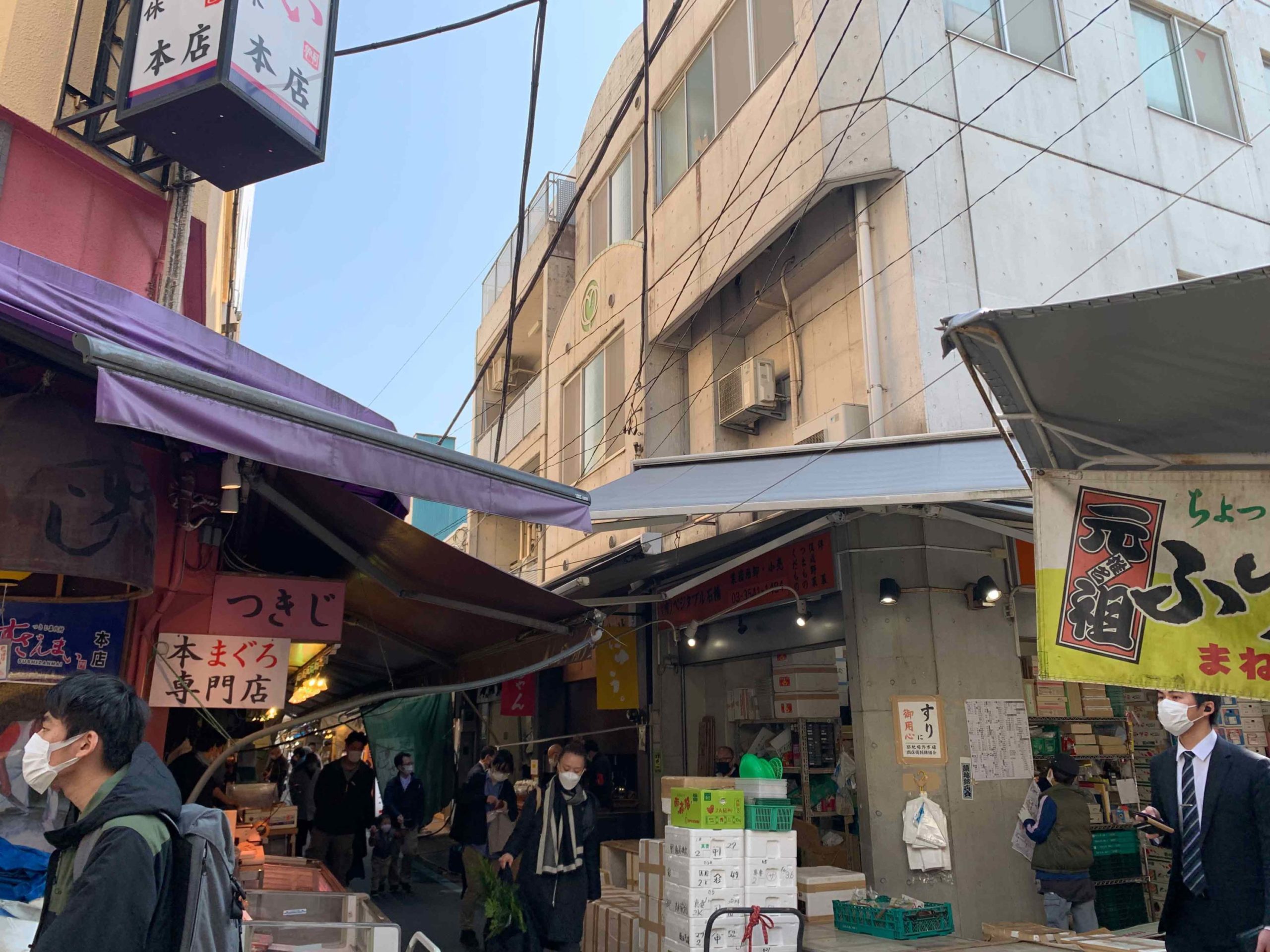
There are various types of shops selling fish such as those specializing in tuna, fresh fish, or dried fish, as well as others which sell meat, Japanese rolled omelette, pickles, fruit, vegetables, dried goods, and other sundries. There is also one shop specializing in katsuobushi (“dried bonito shavings”), so if you would like to try making real soup stock instead of the instant variety, buy some and take on a new challenge!). (If you buy dried bonito, don’t forget you will need to use a shaving machine). Other shops sell tableware items such as chopsticks and lacquerware, which are small and light and thus recommended as souvenirs.
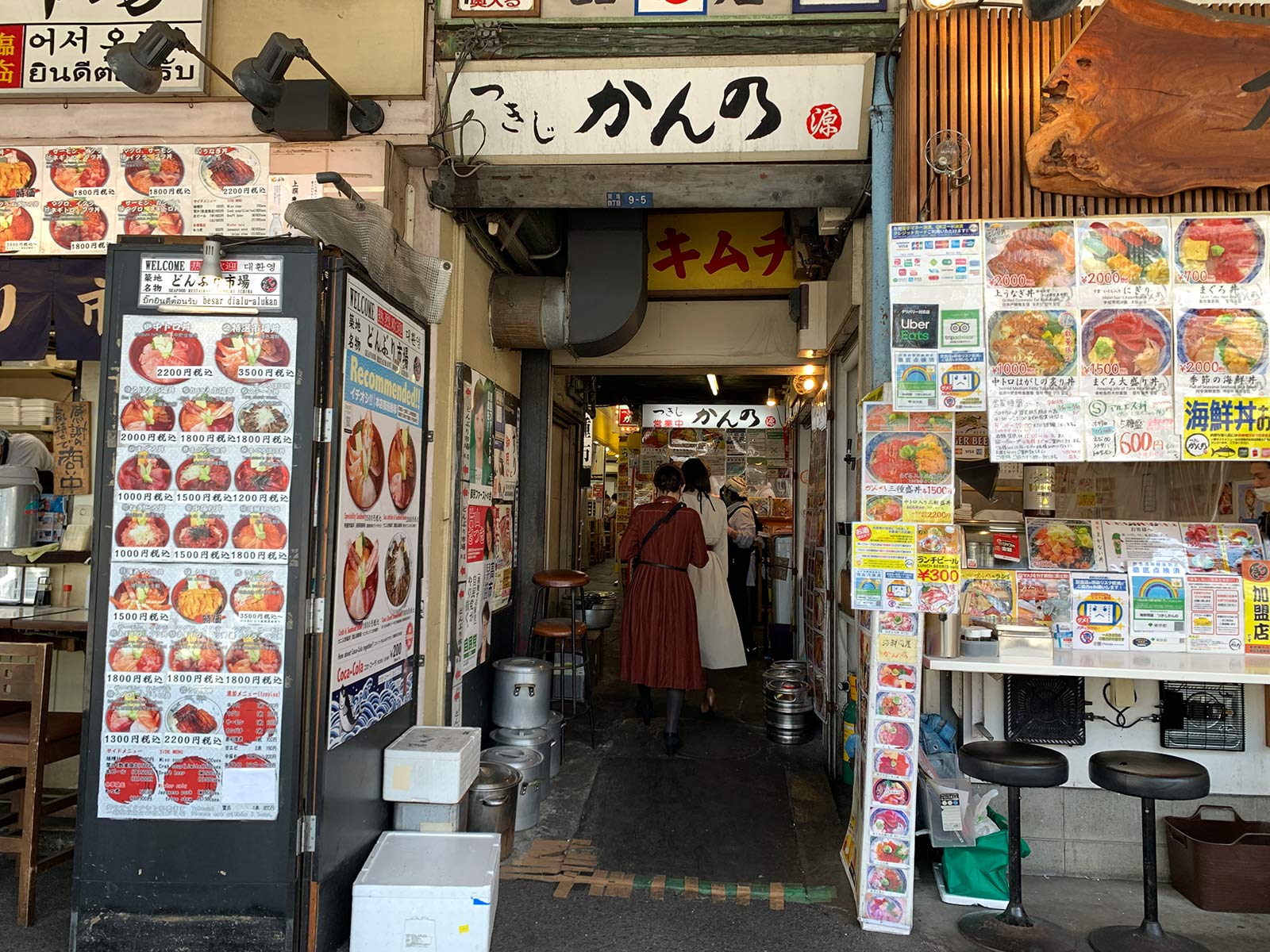
Because it is mostly a wholesale market catering to restaurants, most shops are open from early morning to early afternoon. Go early in the morning to enjoy a much livelier atmosphere! The alleyways reminiscent of Showa times will look great on Instagram from any angle, though if you want to photograph products, make sure to ask a shop staff member first. After you have had your fill of shopping and imbibing the atmosphere of the market, it will be time for an early lunch. Soba and ramen are both available here, as is a seafood BBQ, as of course are many restaurants serving kaisendon and sushi! Because these restaurants were originally established to feed people working in the market, anywhere you eat is sure to be cheap and delicious. However, many places do not accept credit cards, so be sure to bring some cash.
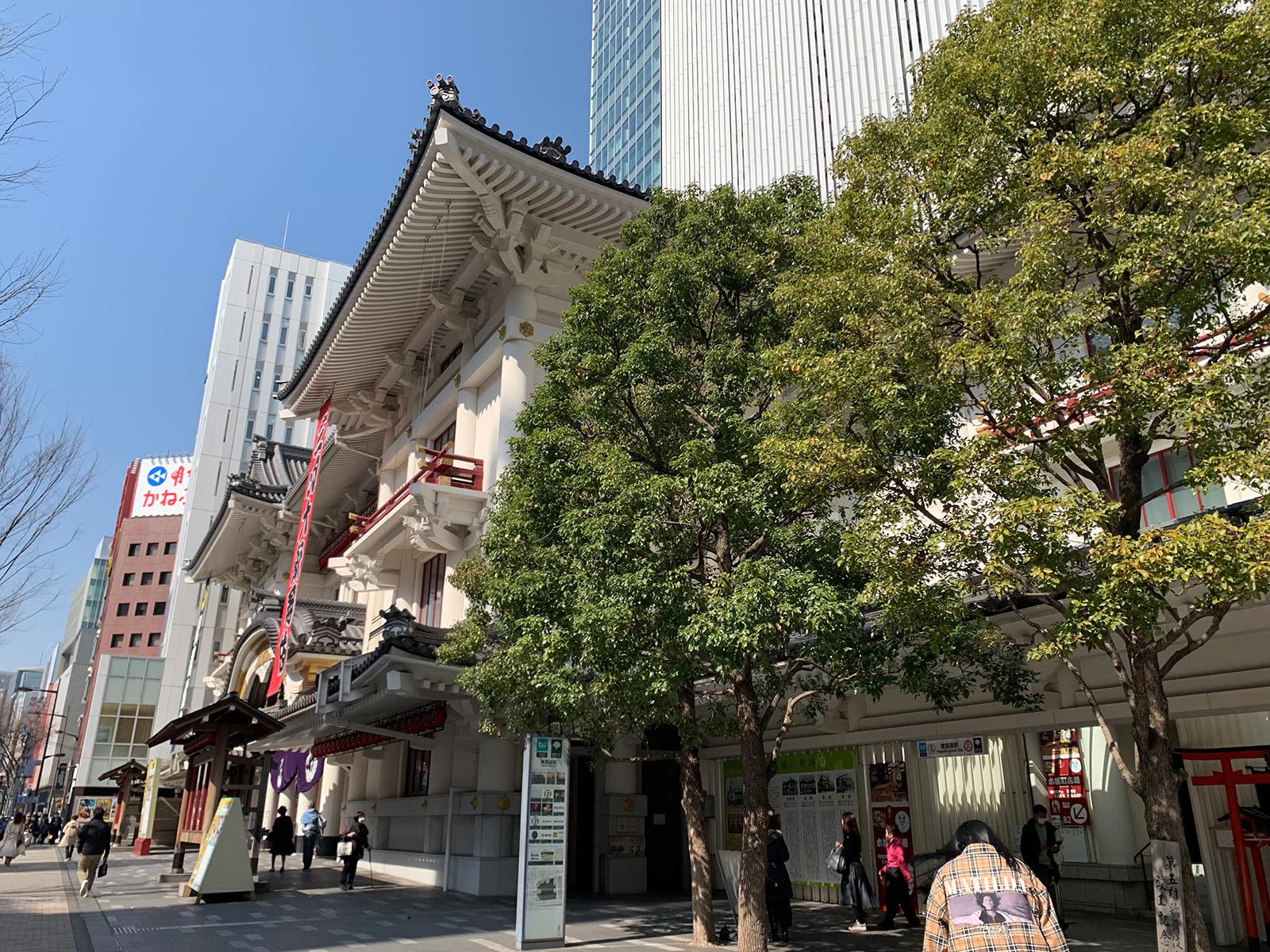
Why not a stroll around Ginza (a “Gin-bura”) if the weather is nice? The Kabuki-za entrance to Ginza is just 0.6 km away and the Ginza 4-chome intersection only 0.9 km. From the humble kitchens of ordinary people to a street filled with high end brand stores, you can enjoy a day exploring the contrasts at the heart of the city of Tokyo.
Subway Oedo Line: 3-minute walk from Tsukiji-shijo Station, 1 exit
Subway Hibiya Line: 3-minute walk from Tsukiji Station, A1 exit
It takes about less than 15min from Park Hotel Tokyo to Tsukiji Fish Market.
Find the route on the google map.
https://goo.gl/maps/1hSGrvDHjB6JDktM8
[Blog] Shibuya Crossing
[Blog] The Palace Running Guide
[Blog] Tokyo Metropolitan Government Building
[Blog] Harajuku’s Takeshita Street, the kawaii mecca